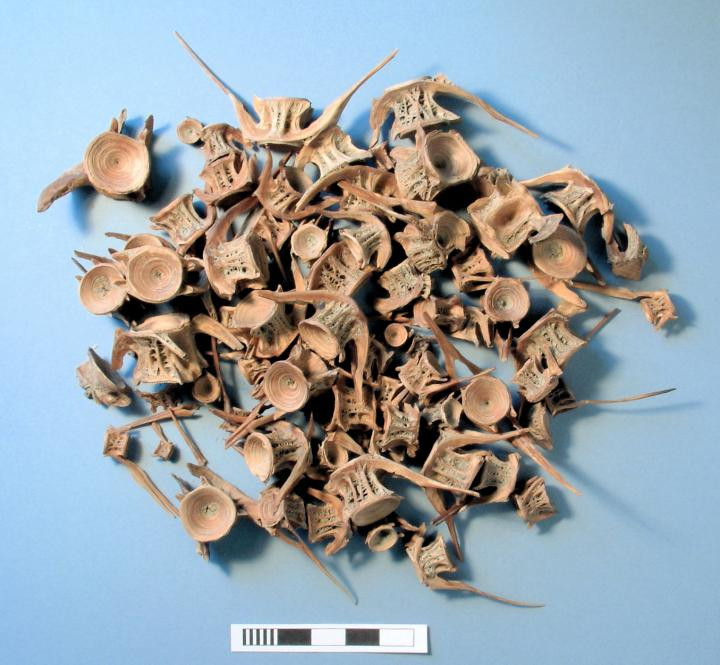Cod recovered from Tudor shipwreck Mary Rose shows globalisation of naval provisions

Cod provisions recovered from the Mary Rose, the Tudor warship that sank in 1545, came from northern and transatlantic waters, highlighting the globalisation of naval provisions. Scientists analysed ancient DNA and stable isotopes of cod bones found on board the vessel to see how the navy at the time was sustained.
The findings, published in the Royal Society Open Science, show how the cod had been caught in areas such as the northern North Sea and fishing grounds of Iceland and Newfoundland. The team from the University of Cambridge note that the growth of long-range trade of staple produces underpinned the development of market economies, with the post-medieval period seeing the expansion of extensive sea fishing.
However, whether or not the requirements of the navy played a role in the development of sea fisheries played a role is unknown. Nor is whether the availability of preserved fish helped sustain Europe's navies.
"An unparalleled opportunity to investigate the role of fish in early naval provisioning is provided by the wreck of the Tudor warship Mary Rose, which sank in the Solent, southern England, in 1545 while sailing to military action with a full complement of crew and a full store of provisions," they wrote. "Among the excavated remains of its supplies were thousands of cod bones, some associated with casks and baskets. The find context and absence of cranial bones strongly suggests that they were from dried or salted cod, staples of the Tudor naval diet, but where had they been caught?"
The Mary Rose sank during the battle of the Solent in 1545 while leading an attack on the galleys of a French invasion fleet. The warship was one of Henry VIII's navy and had served for 33 years against France, Scotland and Brittany. Around 500 crew members died when she was holed by a French cannonball, sinking into the strait between the Isle of Wight and England. The boat was raised in 1982, along with almost 100 skeletons of those who died on board.
Scientists used ancient DNA evidence together with stable isotopes to work out where the fish had been caught. Several samples were found to have come from Iceland, with others from Atlantic Europe and Arctic Norway. A further sample appears to come from Newfoundland – which the authors say is "entirely plausible" due to the English Newfoundland fishery having begun in 1502.

Regardless of the source of this last sample, the researchers say all of the evidence is consistentwith the idea that the preserved cod on the Mary Rose had been sourced far away from Portsmouth, where she set sail from: "Given that dried fish were served as the main naval ration for three of every seven days at this time, it is reasonable to infer that military needs contributed to the demand for cod from distant waters," they wrote.
"By sourcing the cod bones from the Mary Rose, we see that the navy itself was first sustained, in part, by fishermen working distant northern and potentially transatlantic waters. Thus, the commercial exploitation of aquatic ecosystems and the growth of sea power were mutually reinforcing aspects of globalisation in Renaissance Europe."
Study author James Barrett said: "The findings contribute to the idea that the demand for preserved fish was exceeding the supply that local English and Irish fisheries were able to provide in order to feed growing - and increasingly urban - populations. We know from these bones that one of the sources of demand was naval provisions.
"The existence and development of globalised fisheries was one of the things that made the growth of the navy possible. The navy was a key mechanism of maritime expansion, while at the same time being sustained by that expansion. The story of the cod trade is a microcosm of globalisation during this pivotal period that marked the beginning of an organised English navy, which would go on to become the Royal Navy."
© Copyright IBTimes 2025. All rights reserved.






















